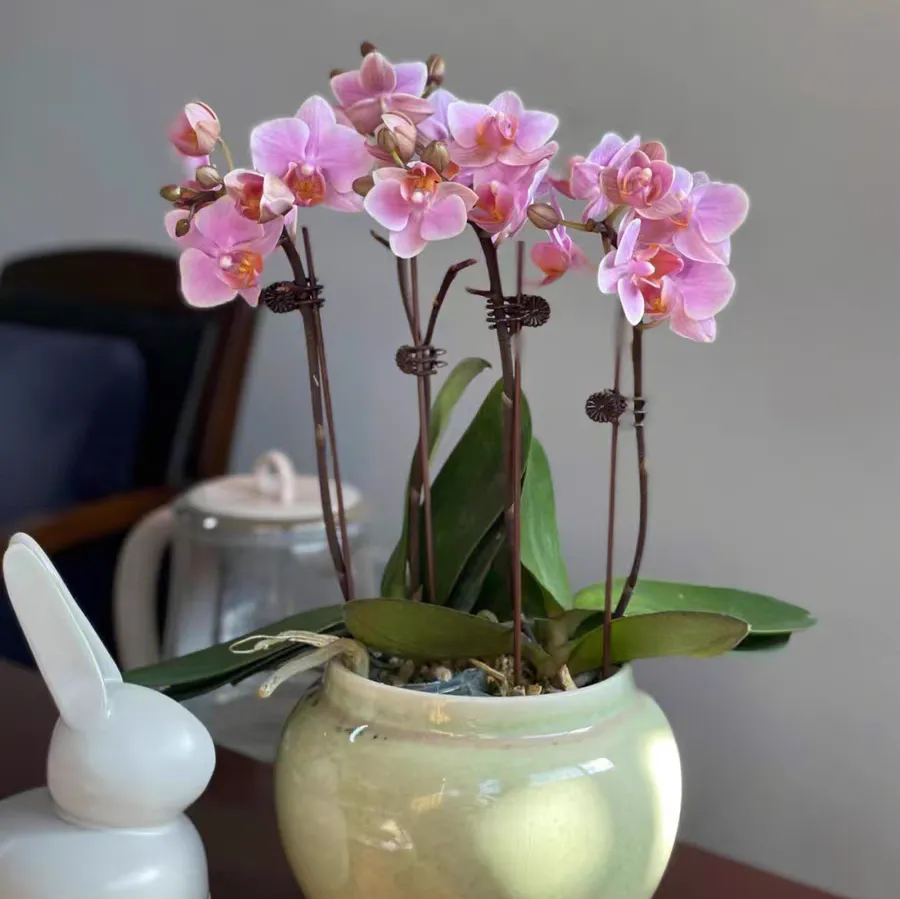When growing Phalaenopsis (moth orchids), have you ever encountered the frustrating problem of rotten leaves? A healthy plant suddenly develops soft, mushy leaves, which can be disheartening. Today, let's explore the causes of Phalaenopsis leaf rot and how to address them.
### I. Causes of Leaf Rot
#### Bacterial and Fungal Infections
- **Bacterial infections** thrive in high-temperature, high-humidity environments with poor ventilation. Infected leaves develop water-soaked spots that can worsen into rot.
- **Fungal infections** present similarly, with lesions forming on leaves that expand over time, leading to decay. Poor indoor ventilation or frequent leaf spraying can promote pathogen growth.
#### Issues with Light, Watering, and Fertilization
- **Lighting**: Phalaenopsis prefer diffused light. Excessive direct sunlight can scorch leaves, causing yellowing, drying, or even rot.
- **Watering**: Both overwatering and underwatering are problematic. Overwatering causes root rot, which in turn affects leaves; underwatering leads to drought stress, causing leaves to dry and rot from water deficiency.
- **Fertilization**: Concentrated or unfermented fertilizers can burn roots, impair nutrient absorption, and gradually cause leaf rot.
#### Imbalanced Substrate pH
Phalaenopsis thrive in slightly acidic substrates. If the substrate becomes too acidic or alkaline, nutrient absorption is hindered, leading to long-term leaf yellowing, wilting, and rot. Hard water or consistent use of a single fertilizer type can disrupt substrate pH balance.
### II. Solutions
#### For Pathogen Infections
- Immediately prune infected leaves with clean scissors, keeping the cut far from healthy tissue to prevent spread. Apply fungicides like carbendazim or chlorothalonil to wounds. Improve ventilation and reduce humidity.
- For bacterial infections, spray agricultural streptomycin in the early stages; for fungal infections, use thiophanate-methyl or mancozeb at the first sign of disease.
#### Addressing Light, Water, and Fertilizer Issues
- Move the plant to a location with diffused light to avoid direct sun exposure.
- Water according to the "dry before wet" principle: water when the substrate surface is dry, ensuring thorough drainage to prevent waterlogging.
- Follow fertilizer instructions strictly: apply thin, frequent doses, avoiding concentrated or unfermented products.
#### Adjusting Substrate pH
- Test substrate pH monthly with a pH试纸 (pH test strip). If acidic, use diluted plant ash water; if alkaline, use ferrous sulfate solution to maintain the optimal pH range.
### III. Daily Maintenance Tips
1. **Regular Inspections**: Check leaves every few days for yellowing or spots—early detection allows prompt action.
2. **Rational Watering**: Water once every 1–2 weeks in spring/autumn, 2–3 days in summer, and 10–15 days in winter, adjusting based on conditions.
3. **Scientific Fertilization**: Use orchid-specific fertilizer during the growing season, apply slow-release fertilizer every 1–2 months, and use diluted liquid fertilizer for regular feeding.
4. **Adequate Ventilation**: Place the plant in a well-ventilated area to reduce pathogen growth.
5. **Prevent Mechanical Damage**: Handle the plant carefully during repotting or pruning to avoid wounds that invite infections.
What causes the leaves of Phalaenopsis (moth orchids) to rot?

Share with
Tagged in :




Leave a Reply